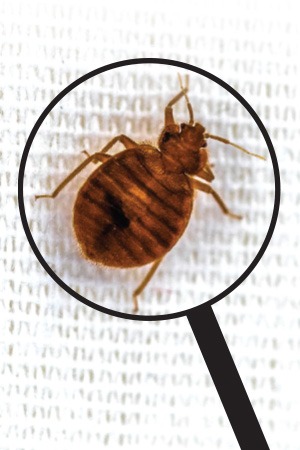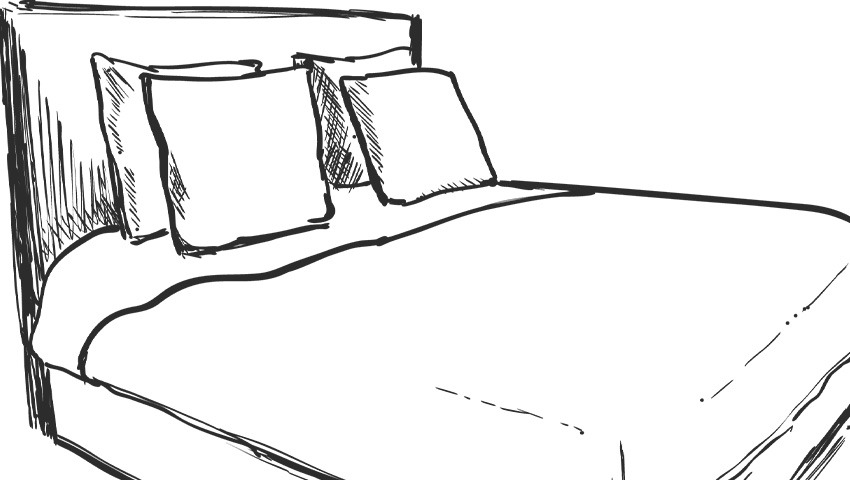Bedbugs aren’t back—they never left
Forgive me if over the last few years I’ve been worrying more about a virus that kills than a bug that bites. But I must admit, that news headline in June caused my eyes to widen in a deja vu of alarm:
BEDBUGS INVADE HAWAII’S HONOLULU AIRPORT, PROMPT GATE CLOSURES.
Of course, you remember the big bedbug scare of about a decade ago. It freaked out us frequent travelers as we yanked back sheets to inspect hotel mattresses and checked a website called The Bedbug Registry for reported sightings.
Then, it all seemed to go away. Except it didn’t.
Even if these blood-sucking insects were pushed off the front pages, they still lurk in some of our most-loved destinations, even the finest luxury resorts. In fact, August is known to entomologists as “bedbug season” precisely because it’s when summer travel is at its peak.
Let’s add one more red flag. Daily housekeeping at hotels has pretty much gone the way of the dinosaur, and some brands have made permanent the shift from once-a-day cleaning, even saying guests prefer the privacy and the offer of loyalty credits. Regardless, staffing levels have still not recovered from the pandemic. Earlier this year, a survey by the American Hotel & Lodging Association found that 43% of hotels said a shortage of housekeepers was still their most urgent need.
Read More: Hospitality and Humanity Meet to Solve Hotel Staffing Crisis
Surging travel + housekeeping gap + bedbugs = scary news headlines and more.
They Can Be Anywhere
For the third year in a row, Chicago had the dubious honor of being No. 1 on Orkin’s Top 50 Bedbug Cities List. (The list is based on the Atlanta-based pest control company’s commercial and residential treatment data.) New York City and Philadelphia held onto the next two spots on the 2023 list. Los Angeles crawled up seven spots to join the Top Five. Also in that group is Cleveland-Akron in Ohio.
Lincoln, Nebraska, came in dead last in Orkin’s ranking of 50 U.S. cities. But that doesn’t mean you’ll never find the disgusting little devils there.
Contrary to popular belief, bedbugs are visible to the naked eye—flat and wingless, apple-seed sized (about 3/16 inch long), tan, red to dark brown in color. They are demon hiders and hitchhikers on luggage, purses and even clothing. Not only in hotel rooms but also in taxis, buses and airplanes.
They are hematophagous, which means blood is their only food source, according to Orkin entomologist Ben Hottel, yet they can survive for months between meals. Female bedbugs can deposit up to five eggs a day; they look like miniature grains of white rice. They aren’t poisonous and do not transmit diseases but their bites result in itchy, red, swollen bumps that can take a day or so to appear. You won’t feel it when you’re bitten, because bedbugs anesthetize as they feed.
So, like it or not, we all need to be on high alert for these persistent pests again. Unless you’d prefer to have unwanted guests ruin your next meeting or vacation. Or take up residence in your home.
S.L.E.E.P.
 Don’t let the bedbugs bite, the old saying goes. Orkin still recommends following the acronym S.L.E.E.P.
Don’t let the bedbugs bite, the old saying goes. Orkin still recommends following the acronym S.L.E.E.P.
Survey the hotel room for signs of an infestation. Be on the lookout for tiny, ink-colored spots on mattress seams, in soft furniture and behind headboards. These are fecal stains of digested blood.
Lift and look in bedbug hiding spots: the mattress, box spring and other furniture, as well as behind baseboards, pictures and even torn wallpaper.
Elevate luggage away from the bed and wall. The safest places are in the bathroom or on counters.
Examine your luggage carefully while repacking and once you return home from a trip. Always store luggage away from the bed.
Place all dryer-safe clothing from your luggage in the dryer for at least 30-45 minutes at the highest setting after you return home. This will kill the bugs and their eggs.
This article appears in the September 2023 issue. You can subscribe to the magazine here.




